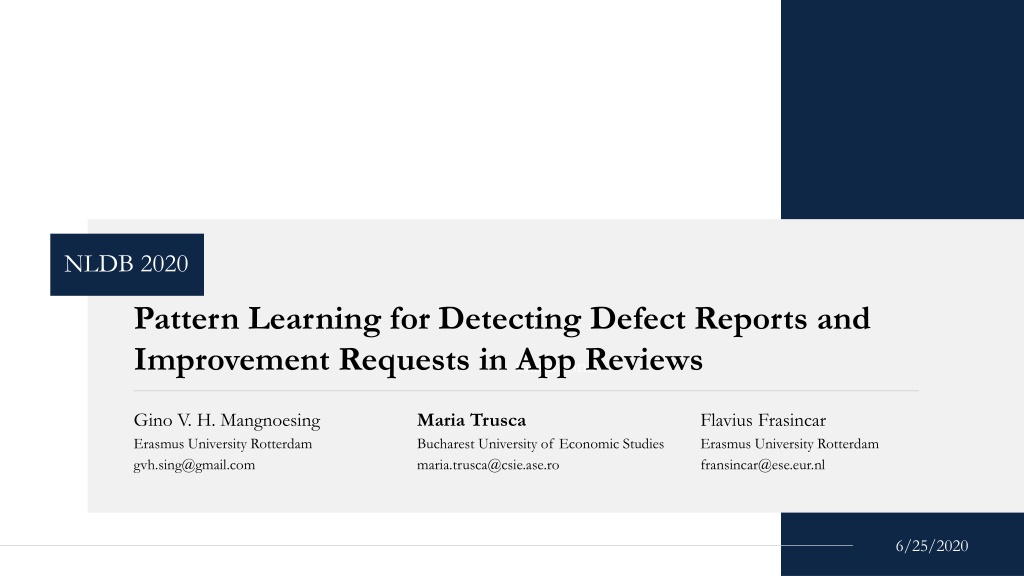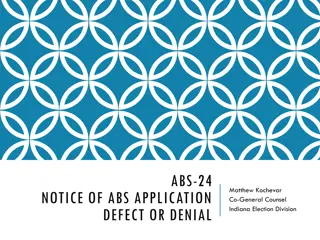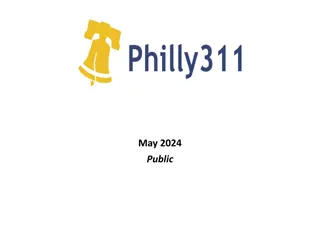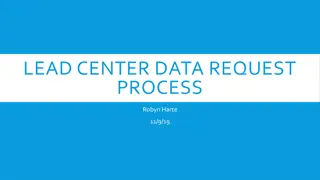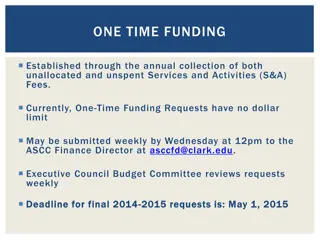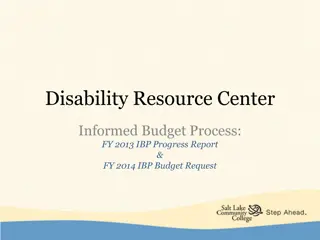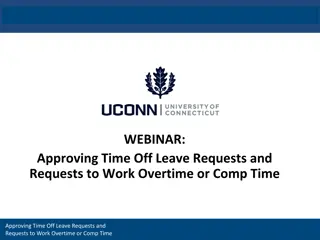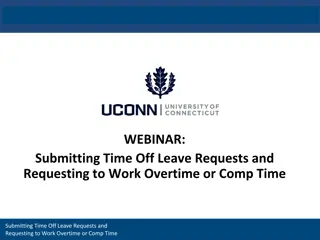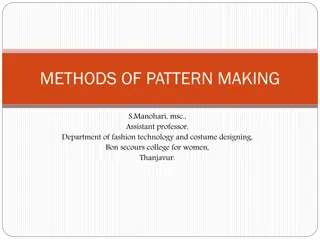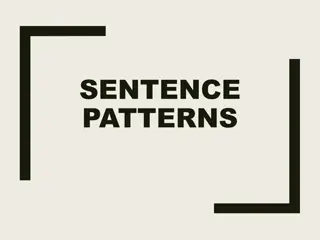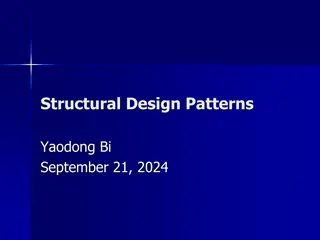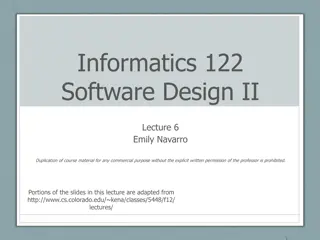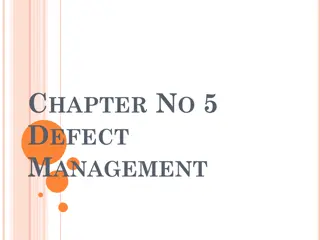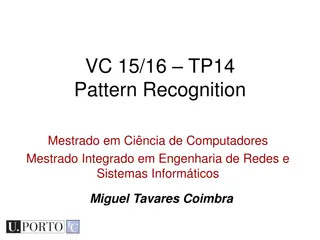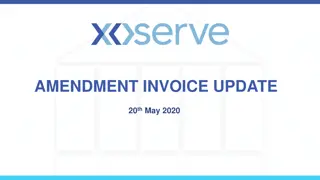NLDB 2020 Pattern Learning for Detecting Defect Reports and Improvement Requests
This research paper focuses on automatically learning patterns to detect actionable feedback in mobile app reviews, specifically identifying defect reports and improvement requests. The main goal is to develop a mechanism that can effectively classify feedback types using both manual and learned patterns. It addresses research questions on implementing pattern learning mechanisms, identifying effective patterns for classification, and comparing distant-supervised SVM with supervised learning methods. The paper covers methods like genetic algorithms and programming for pattern learning initialization and explores the selection of individuals using the ramped-half-and-half method.
Download Presentation

Please find below an Image/Link to download the presentation.
The content on the website is provided AS IS for your information and personal use only. It may not be sold, licensed, or shared on other websites without obtaining consent from the author. Download presentation by click this link. If you encounter any issues during the download, it is possible that the publisher has removed the file from their server.
E N D
Presentation Transcript
NLDB 2020 Pattern Learning for Detecting Defect Reports and Improvement Requests in App Reviews Garamond Gino V. H. Mangnoesing Erasmus University Rotterdam gvh.sing@gmail.com Maria Trusca Bucharest University of Economic Studies maria.trusca@csie.ase.ro Flavius Frasincar Erasmus University Rotterdam fransincar@ese.eur.nl 6/25/2020
Introduction Main goal: detect actionable feedbacks in reviews using automatically learned and manual patterns 2
Introduction Main goal: detect actionable feedbacks in reviews using automatically learned and manual patterns Problem definition: Let A = {A1, , Am) be a range of mobile apps. Each Ai has m reviews R1, , Rm with two possible feedback types T1 as defect reports and T2 as improvement requests. Our problem is to identify the reviews with at least one of these two feedbacks. 2
Introduction Main goal: detect actionable feedbacks in reviews using automatically learned and manual patterns Problem definition: Let A = {A1, , Am) be a range of mobile apps. Each Ai has m reviews R1, , Rm with two possible feedback types T1 as defect reports and T2 as improvement requests. Our problem is to identify the reviews with at least one of these two feedbacks. Research questions: How to implement a mechanism for automatically learning patterns? Which patterns are effective for classifying feedback as defect reports and improvement requests? Can distantly-supervised SVM outperform simple supervised learning with patterns in the detection of actionable feedbacks? 2
Automatically Pattern Learning - Prerequisite Choose a learning algorithm: Requirements: Interpretability; Modifiability. Evolutionary Algorithms: Genetic Algorithm; Genetic Programming. 3
Automatically Pattern Learning - Prerequisite Choose a learning algorithm: Function and terminal nodes Requirements: Interpretability; Modifiability. Evolutionary Algorithms: Genetic Algorithm; Genetic Programming. Define a set of function and terminal nodes at the program or individual level: Functions Terminals AND Operator OR Operator NOT Operator Sequence Repetition Literal Part-of-Speech Wildcard Entity Type 3
Automatically Pattern Learning Initialisation: select N individuals using ramped-half-and-half method. 4
Automatically Pattern Learning Initialisation: select N individuals using ramped-half-and-half method. Define a pool of recommended terminal candidates: all entity types, the wildcard and the most frequent unigrams and bigrams of types Literal and Part-of-Speech. 4
Automatically Pattern Learning Initialisation: select N individuals using ramped-half-and-half method. Define a pool of recommended terminal candidates: all entity types, the wildcard and the most frequent unigrams and bigrams of types Literal and Part-of-Speech. Criteria for termination: maximum number of generations (termination for a single individual run); maximum number of generations for which a pattern does not increase the fitness of the entire group (termination for the entire group of patterns). 4
Automatically Pattern Learning Initialisation: select N individuals using ramped-half-and-half method. Define a pool of recommended terminal candidates: all entity types, the wildcard and the most frequent unigrams and bigrams of types Literal and Part-of-Speech. Criteria for termination: maximum number of generations (termination for a single individual run); maximum number of generations for which a pattern does not increase the fitness of the entire group (termination for the entire group of patterns). Selection: create a population of individuals using the Tournament Selection method and prepare the individuals of the next generation using three genetic operations: Elitism, Crossover, and Mutation. 4
Automatically Pattern Learning Initialisation: select N individuals using ramped-half-and-half method. Define a pool of recommended terminal candidates: all entity types, the wildcard and the most frequent unigrams and bigrams of types Literal and Part-of-Speech. Criteria for termination: maximum number of generations (termination for a single individual run); maximum number of generations for which a pattern does not increase the fitness of the entire group (termination for the entire group of patterns). Selection: create a population of individuals using the Tournament Selection method and prepare the individuals of the next generation using three genetic operations: Elitism, Crossover, and Mutation. Optimisation: learn a disjunctive set of rules through the Sequential Covering algorithm. 4
Data Evernote mobile app (4470 reviews) 46% annotated data (CrowdFlower/Figure Eight) 26% training data; 20% testing data. Inter-annotator agreement per task using Fleiss Kappa measure. Question Agreement% Does this review contain a defect report? Does this review contain an improvement request? 97.1 92.75 5
Patterns Type Pattern Example no (option|ability) to No ability to copy or duplicate notes on mobile. A(DR) i can (n t|not) I can t remove the numbers in lists anymore. (an|the) option to Would like to see an option to adjust the font size. Defect report (DR): 5 manual patterns (type A); 2 generated patterns (type B). A (IR) please VB Please add Google now integration. OR: |-Software Bug: Entity Type |-Software Update: Entity Type The last few months of updates haven t changed or lessened the lag you get when you edit notes. Improvement requests (IR): 8 manual patterns (type A); 10 generated patterns (type B). B (DR) OR: |-(however|but): Literal |-(not|n t): Literal However I cannot do so from the app which is very appalling SEQ: |-please: Literal |-VB: Syn. Category Please add automatic title from the rst sentence from notes instead of adding auto events... B (IR) SEQ: |-5: Literal |-stars: Literal Colour coding of the notes and reminders for repetitive tasks can fetch 5 stars. 6
Patterns vs. distant supervised SVM Task Defect Classification Improvement Classification Method Precision Recall F1-measure 0.47 Precision Recall F1-measure 0.64 Standard SVM 0.39 0.59 0.78 0.54 Patterns A (manual) 0.61 0.42 0.50 0.81 0.42 0.56 Patterns B (learned) 0.91 0.39 0.54 0.79 0.51 0.62 SVM Distant Supervision A 0.24 0.67 0.36 0.39 0.48 0.43 SVM Distant Supervision B 0.41 0.59 0.49 0.46 0.44 0.45 Approach Defect Patterns Improvement Patterns Total Manual (per person) 8.5 hours 10.25 hours 18.75 hours Automated 3.5 hours 2.4 hours 5.9 hours 7
Conclusion and Future Work Comparing with the manual patterns, automatically generated patterns boost the performance (F1- measure) as follows: Defect reports: Supervised learning: by 0.04 pp. Distant supervised learning: by 0.05 pp. Improvement requests: Supervised learning: by 0.06 pp. Distant supervised learning: by 0.02 pp. and reduce 70% of the construction time. 8
Conclusion and Future Work Comparing with the manual patterns, automatically generated patterns boost the performance (F1- measure) as follows: Defect reports: Supervised learning: by 0.04 pp. Distant supervised learning: by 0.05 pp. Improvement requests: Supervised learning: by 0.06 pp. Distant supervised learning: by 0.02 pp. and reduce 70% of the construction time. Future work: increase the flexibility of our patterns by considering more complex terminal structures; explore the automatic generation of our domain-specific gazetteers lists to increase coverage and the framework applicability in other domains. 8
For questions, please send an email to maria.trusca@csie.ase.ro Thank you! 9
